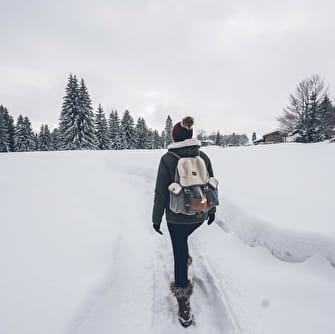
La Cale à Diairi
The word diairi originally means "bun". A "câle à diairi" is simply a bonnet used to cover the bun. The diairi is undoubtedly a distinctive feature of the Montbéliard region. It is the symbol of Protestantism and the region's Württemberg ties.
The diairi cap was abandoned at the beginning of the 20th century. It was the last item of costume worn in the countryside. During the first half of the 20th century, some elderly people still wore the headdress on a daily basis.
Most headdresses were made of satin or black, blue, brown or very dark red velvet. Older women or widows wore a black headdress embroidered entirely with black beads. Other headdresses, white and trimmed with coloured pearls, were made from cotton quilts and were reserved for engagements and weddings. According to custom, the decoration of the headdress was a secret between the bride and groom; no one was allowed to see the headdress until the day of the ceremony. Headdresses were often a source of rivalry between young girls and were the pride of families.
Reviving tradition:
In June 1991, the Pays de Montbéliard Tourist Office brought the diairi cap back into fashion by creating a "diairi" activity. It was an immediate success, with almost a hundred women signing up straight away to carry on the tradition.
Today, there are still almost fifty of them, divided into 3 workshops (one on Tuesdays, one on Thursday afternoons and one on Thursday evenings), helping to promote this very special local heritage. It is undoubtedly this dual aspect - respect for tradition and creativity - that has attracted so many women.
As well as the diairis, the câlières have created a whole range of items to add to the Tourist Office shop, including frames, boxes and dolls. There's also a special section on restoring antique headdresses.
- graphic arts
- jewellery
- embroidery
- Cosmetics






